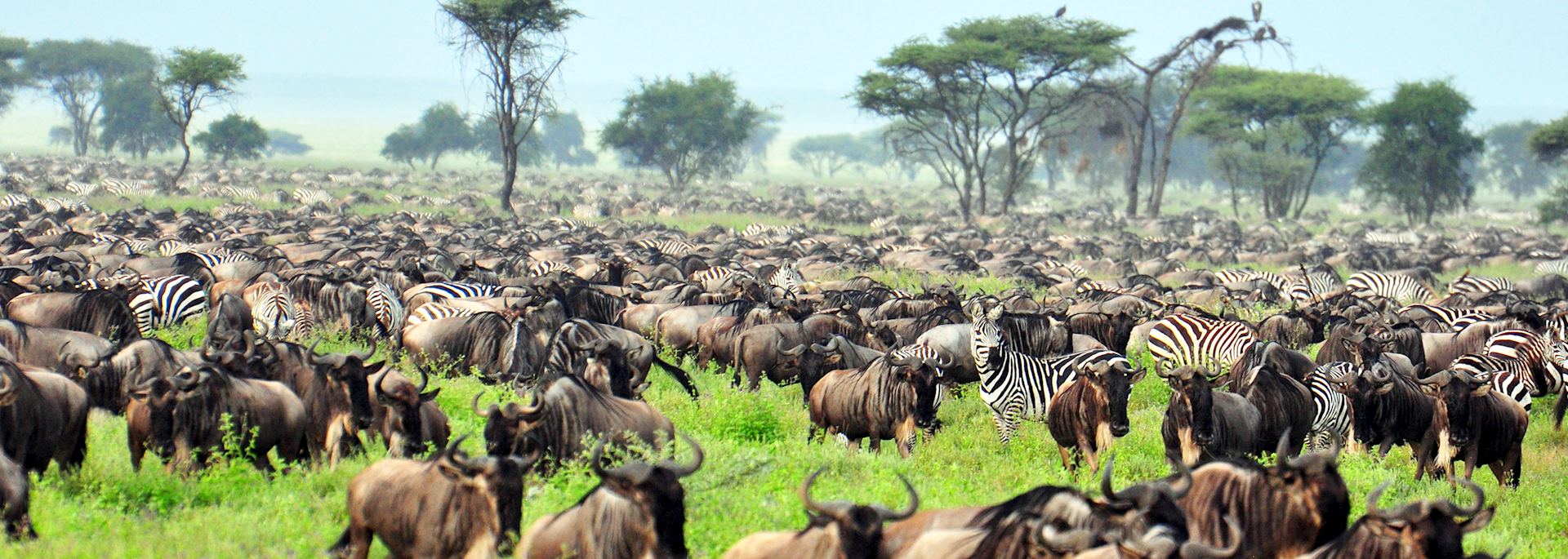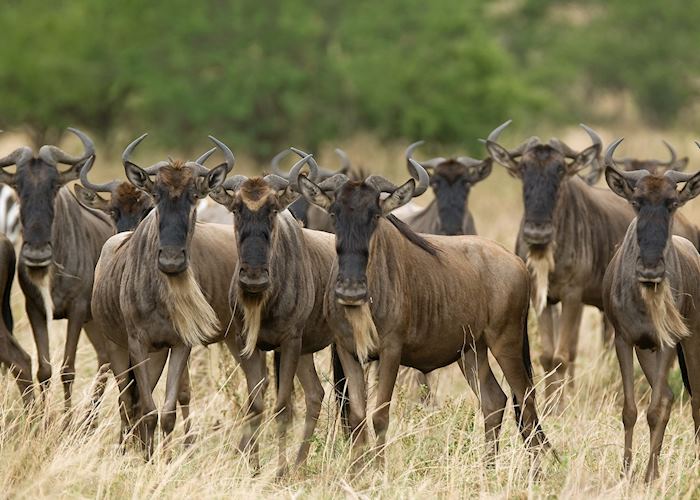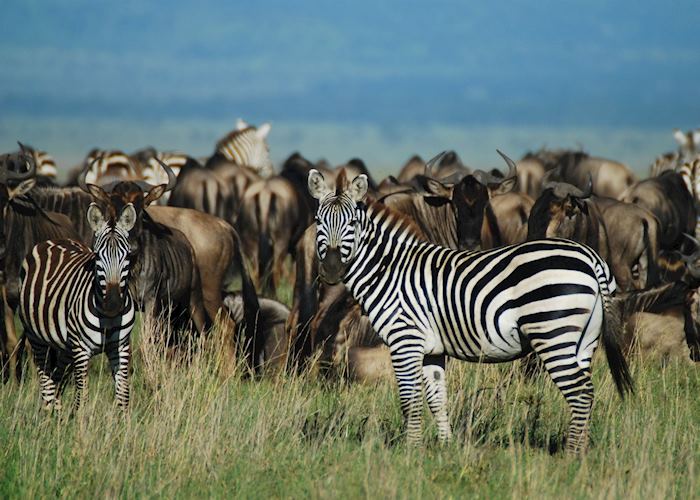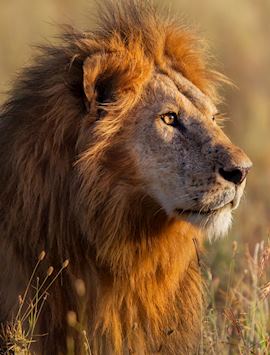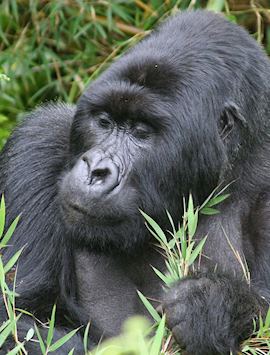Each year the lives of almost half a million tiny, tottering, wildebeest begin on the southern plains of the Serengeti. Within minutes they are on their feet, sheltering among the herd on shaky legs, and preparing to run at any moment.
Throughout the year, the two million strong migration of wildebeest, zebra and gazelles wanders the plains of the Serengeti and the Masai Mara in search of water and fresh grazing. Never far from the migration, the predators await; lion, leopard, cheetah and hyena, poised for the moment when an unsuspecting animal can be snatched. From December to March the migration can be spotted grazing on the short grass plains in the Ndutu Area. As June approaches the rains begin to lessen, and as the full moon waxes, the rut begins in the south-western area of the park.
As the plains of the Serengeti become increasingly parched, the migration sweeps northwards, toward the Masai Mara, where the great wall of the rift valley traps any final drops of rain. The herds trek over the Grumeti River, heading through the scrubland of Lobo, and up past Migration Camp. By July, the front-runners of this two-million strong migration are preparing to cross the Mara River, whilst the rear-guard may be as far south as the Grumeti. First one animal, and then another will take the lead, till the river-bank brings them to a halt. Fearing perhaps what lies in the deep waters below, the animals can often wait for two weeks before crossing, approaching the river and turning back at the last moment with a kick of the heels and a puff of dust. Eventually, a wildebeest will take the plunge, and thousand upon thousand of these animals will swim desperately across the river.
By September, the migration is safely in the Mara, where the water brings grazing throughout the lean months of the dry season. The animals move back and forth across the Mara and Talek rivers in search of water and grass.
As the temperatures rise, the November rains begin to fall, bringing life to the grasslands and rich volcanic soil of the Southern Serengeti. The wildebeest, able to detect rain from over 50 kilometres away, turn south again, trudging through Loliondo, Lobo and Piaya, to the rich grasslands of Ndutu. Here, the zebra, wildebeest and gazelles rest after their arduous journey, and prepare to bring new life to the plains of the Serengeti.


